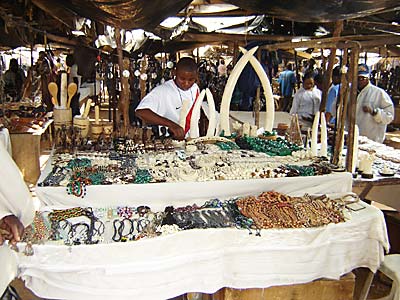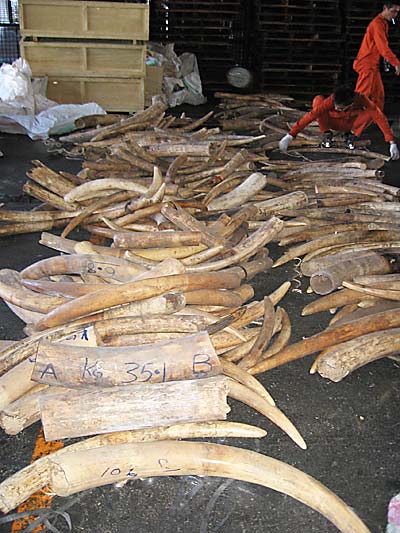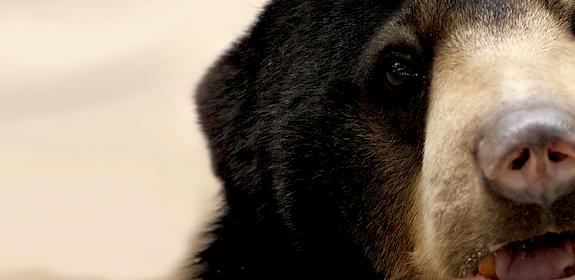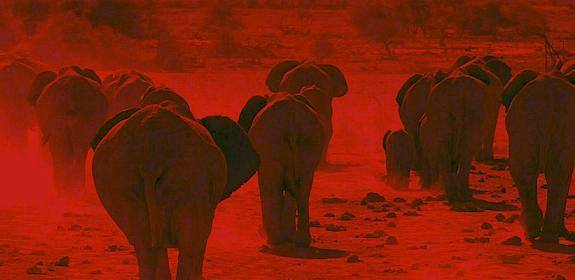Asian crime syndicates based in Africa fuel illegal ivory surge
Cambridge, UK/Harare, Zimbabwe, 10 May 2007—Asian-run organized crime syndicates based in Africa are being implicated in the increase in illegal trade in elephant ivory, says a newly released study by TRAFFIC.

TRAFFIC’s report is based on an analysis of almost 12,400 ivory seizure cases from 82 countries recorded since 1989 in the Elephant Trade Information System (ETIS) – the world’s largest database of elephant product seizure records.
The study identified the Democratic Republic of the Congo, Cameroon and Nigeria as the three nations most heavily implicated as the sources of ivory in this illegal trade.
“With myriad conflict zones, Central Africa is currently hemorrhaging ivory, and these three countries are major conduits for trafficking illicit ivory from the region to international markets, particularly in Asia,” says Tom Milliken, Director of TRAFFIC’s Africa programme and the principal author of the study.
The illicit trade is directly correlated to the presence of large-scale, poorly regulated domestic ivory markets in parts of Africa and Asia. These markets are in direct contravention of decisions adopted by Parties to the Convention on International Trade in Endangered Species of Wild Fauna and Flora (CITES), aimed at prohibiting unregulated domestic sale of ivory.
“Four years ago, CITES drew up an action plan for tackling these domestic ivory markets, but so far, it appears to have had little impact,” says Milliken.
One exception is Ethiopia, which has effectively clamped down on its domestic ivory market by implementing the plan.
“Ethiopia has set a fine example for other countries to emulate,” says Dr Susan Lieberman, Director WWF’s Global Species Programme. “It shows what other countries could do if only they had the political will to do it.”
Part of an illegal consignment of 2.5 tonnes of ivory seized by Taiwanese authorities in July 2006 at Kaohsiung harbour. The ivory was en route from Tanzania to the Philippines © Joyce Wu/TRAFFIC Click to enlargeMarkets in China create a high demand for illicit ivory, which arrives either directly or through ports such as Hong Kong, Macao and Taiwan. Japan and Thailand are also important final destinations, whereas the Philippines mainly acts as a transit country linked to the major importers. Together, these seven countries and territories account for 62 per cent of the ivory recovered in the 49 largest seizure cases recorded by ETIS.

World-wide, the number of ivory seizures averages 92 cases a month – or three per day. Large-scale ivory seizures (of 1 tonne or more) have increased both in number and in size in recent years—from 17 between 1989 and 1997 to 32 between 1998 and 2006.
“This demonstrates greater sophistication, organization and finance behind the illegal movement of ever larger volumes of ivory from Africa to Asia,” says Lieberman. “This is clearly a negative consequence of the ongoing globalization of African markets and economies.”
There has been significant improvement in law enforcement efforts and policing of local markets in mainland China, but ETIS records show that Chinese citizens have been arrested, detained or absconded in at least 126 significant ivory seizure cases in 22 African elephant range states.
“It is imperative that China reaches out to the growing Chinese communities in Africa with a clear message that involvement in illegal ivory trade will not be tolerated,” adds Milliken.
For further information:
Tom Milliken, Director of TRAFFIC East/Southern Africa, Harare, Zimbabwe, T +263 4 252 533,
Richard Thomas, Communications Co-ordinator at TRAFFIC International, Cambridge, UK, t +44 1223 279 068,
NOTES
* The full report, The Elephant Trade Information System (ETIS) and the illicit trade in ivory: A report to the 14th meeting of the Conference of the Parties to CITES by T. Milliken, R. W. Burn and L. Sangalakula: TRAFFIC East/Southern Africa, 2007, is available from: http://www.cites.org/eng/cop/14/doc/E14-53-2.pdf
* The establishment of ETIS was mandated under CITES in 1997 to monitor illicit trade in ivory and to assess whether any limited resumption of ivory trade would have negative impacts on elephant populations. Since its inception, ETIS has received funding from the UK Department of Environment, Food and Rural Affairs (DEFRA), the United States Fish and Wildlife Service (USFWS), the World Wide Fund for Nature (WWF), the CITES Secretariat and the European Union.
* The analysis was carried out with the assistance of the Statistical Services Centre of the University of Reading, UK.
* The TRAFFIC report will be a formal agenda item at the upcoming meeting of CITES Parties in The Hague, Netherlands, from 3–15 June 2007.
* Between 1989 and 1997, all elephant populations were listed in Appendix I of CITES, which imposed a global ban on international commercial trade in elephant products. Subsequently, CITES Parties have twice approved limited, conditional one-off sales of ivory from four southern African countries (South Africa, Namibia, Botswana and Zimbabwe) whose elephant populations have been transferred to Appendix II.



